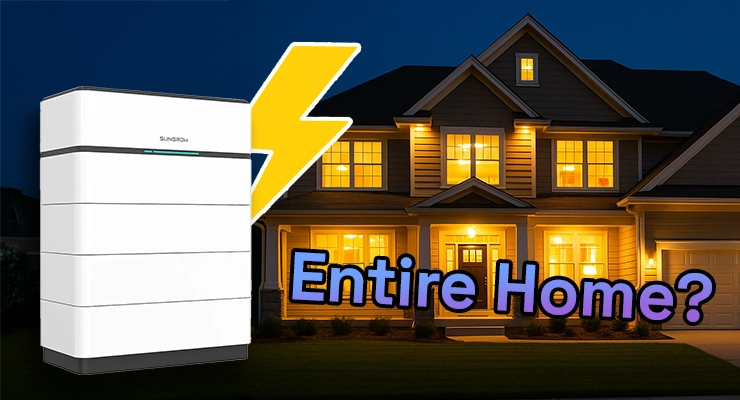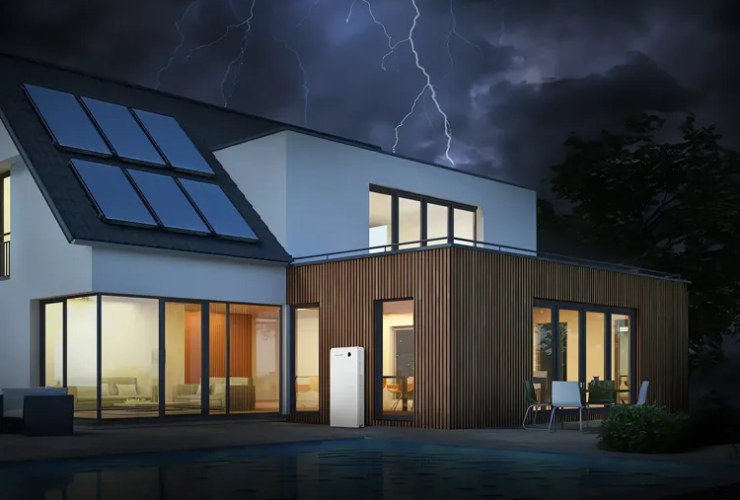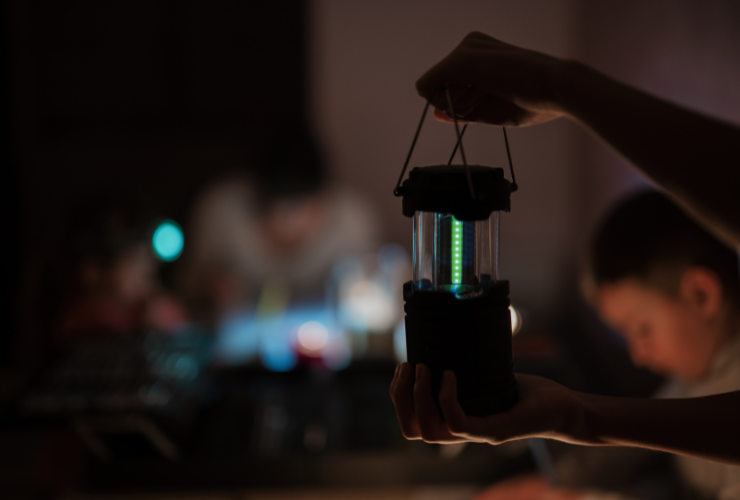Fast read
Yes, you can choose to back up your entire home or just a few essential appliances during a blackout with a solar battery system. A partial backup is the most common and affordable option, powering critical items like your fridge, lights, and Wi-Fi via a dedicated circuit. A full home backup provides ultimate convenience by powering everything, but requires a significantly larger investment in battery capacity and inverter power, making it a more complex and expensive solution.
Can I have a full home backup during a blackout?
In Australia, the increasing frequency of grid outages caused by extreme weather and an aging infrastructure has made blackout protection a major reason for homeowners to invest in solar batteries. When the power goes out, having a battery can mean the difference between sitting in the dark and keeping your life running smoothly.
A common question we hear is whether a battery can power an entire house or just the basics. The answer is that you can have either, but the decision involves a crucial trade-off between convenience, complexity, and cost. Let’s explore the two main paths you can take: partial home backup and full home backup.
What is a partial home backup?
A partial home backup, often called an “essential loads” backup, is the most popular and practical choice for the majority of Australian households. This setup is designed to power only your most critical appliances during a grid outage.
During installation, an accredited electrician wires these essential items to a separate sub-panel or protected circuit. When a blackout occurs, your battery system automatically directs power to this circuit only.
Typically, an essential load circuit includes:
- The refrigerator and freezer
- A few lighting circuits
- Key power points for charging phones and laptops
- The modem and Wi-Fi router keep you connected
- Sometimes a medical device or a gate motor
The primary advantage of this approach is that it is highly efficient and cost-effective. By focusing the battery’s stored energy on just the necessities, you can achieve a much longer backup runtime from a smaller, more affordable battery.
What is a full home backup?
A full home backup system is designed to provide power to every circuit in your house, just as if the grid were still operating. From the air conditioner and oven to the washing machine and pool pump, everything can continue to run. This is achieved by connecting the battery system to your main switchboard, allowing it to energise the entire property.
The clear benefit is total convenience and the peace of mind that comes with uninterrupted power. You may not even notice a blackout has occurred, as the switchover from the grid to battery power is typically seamless.
However, this convenience comes at a significant cost. Powering an entire home, especially with high-draw appliances, requires a much larger and more powerful system. This means a higher upfront investment in both the battery and the inverter. It also means your stored energy will be used up much faster, reducing the overall duration of your backup power.
Key differences at a glance: Partial vs. Full backup
Choosing the right path depends on your priorities. Here’s a simple breakdown of the trade-offs:
- Cost: A partial backup is significantly more affordable. A full home backup is a premium solution that can cost substantially more due to the need for more hardware.
- Components: A partial backup can often be achieved with a standard-sized battery (around 10kWh) and a hybrid inverter. A full home backup requires a high-capacity battery, often 16kWh or more, and a powerful inverter (or multiple inverters stacked together) to handle the high electrical load of the entire house. For example, a robust hybrid inverter from a brand like Sungrow is often considered for these demanding applications.
- Installation: A partial backup requires your installer to do extra electrical work to create and wire the “essential loads” sub-panel. A full home backup connects to the main switchboard but must include a specific gateway device or backup interface that can safely and automatically disconnect your home from the grid during an outage, a feature offered by systems from brands like SolarEdge and Tesla.
- Performance and Runtime: A partial backup provides long-lasting power for your absolute necessities. A full backup powers everything, but for a shorter period. It also carries a risk of the inverter tripping if too many heavy appliances like a kettle, air conditioner, and oven are turned on simultaneously. Advanced systems from brands like Sigenergy offer smart load management features to help prevent this.
How do I choose the right size battery and inverter?
Sizing your system correctly is critical for it to perform as you expect during an outage.
For a partial backup, a battery with 10-15kWh of usable capacity is often sufficient to run essential loads overnight. The key is ensuring the inverter’s power output rating can handle the combined load of your essential appliances when they are running.
For a full home backup, the calculation is more demanding. As a starting point, you’ll likely need a battery with a capacity at least equal to your home’s average daily electricity consumption, which could be 20-30kWh or more for many families. The inverter needs a high continuous power output (often 8kW or higher) to manage the surge demand from starting large appliances.
What are the common pitfalls to avoid?
It’s important to go into this decision with your eyes open. Here are two common mistakes homeowners make:
- Assuming every battery provides backup: Not all solar battery systems are automatically capable of providing blackout protection. The feature requires a specific type of hybrid inverter and the correct wiring configuration. If backup power is a priority, you must make this clear to your installer from the start.
- Forgetting you’re in a blackout: With a seamless full home backup, it can be easy to forget you are running on limited battery power. Running multiple high-energy appliances can drain the battery much faster than anticipated, leaving you without power sooner than you expected. It’s also vital to ensure your system is configured to allow your solar panels to continue recharging the battery during a daytime outage; otherwise, once the battery is empty, it stays that way until the grid returns.
Conclusion: What’s the right choice for you?
Ultimately, the decision between partial and full home backup comes down to balancing your need for convenience against your budget and practical energy requirements.
For most Australian homeowners, a partial backup of essential loads strikes the perfect balance. It provides security and peace of mind, ensuring your critical appliances keep running during an outage, without the significant financial outlay of a whole-home system.
A full home backup is a premium, high-convenience solution. It is best suited for those with a larger budget, higher energy needs, or a critical requirement to keep their entire property powered without interruption.
Before making a final decision, take the time to assess your family’s true needs. What appliances can you absolutely not live without during an outage? Discuss these priorities with an SAA-accredited installer. They can analyse your energy usage and design a system that delivers the reliability you need within a budget you are comfortable with.
If you need help finding trusted local professionals to provide tailored advice and quotes, Your Energy Answers offers a free and independent service connecting you with accredited experts across Australia.





